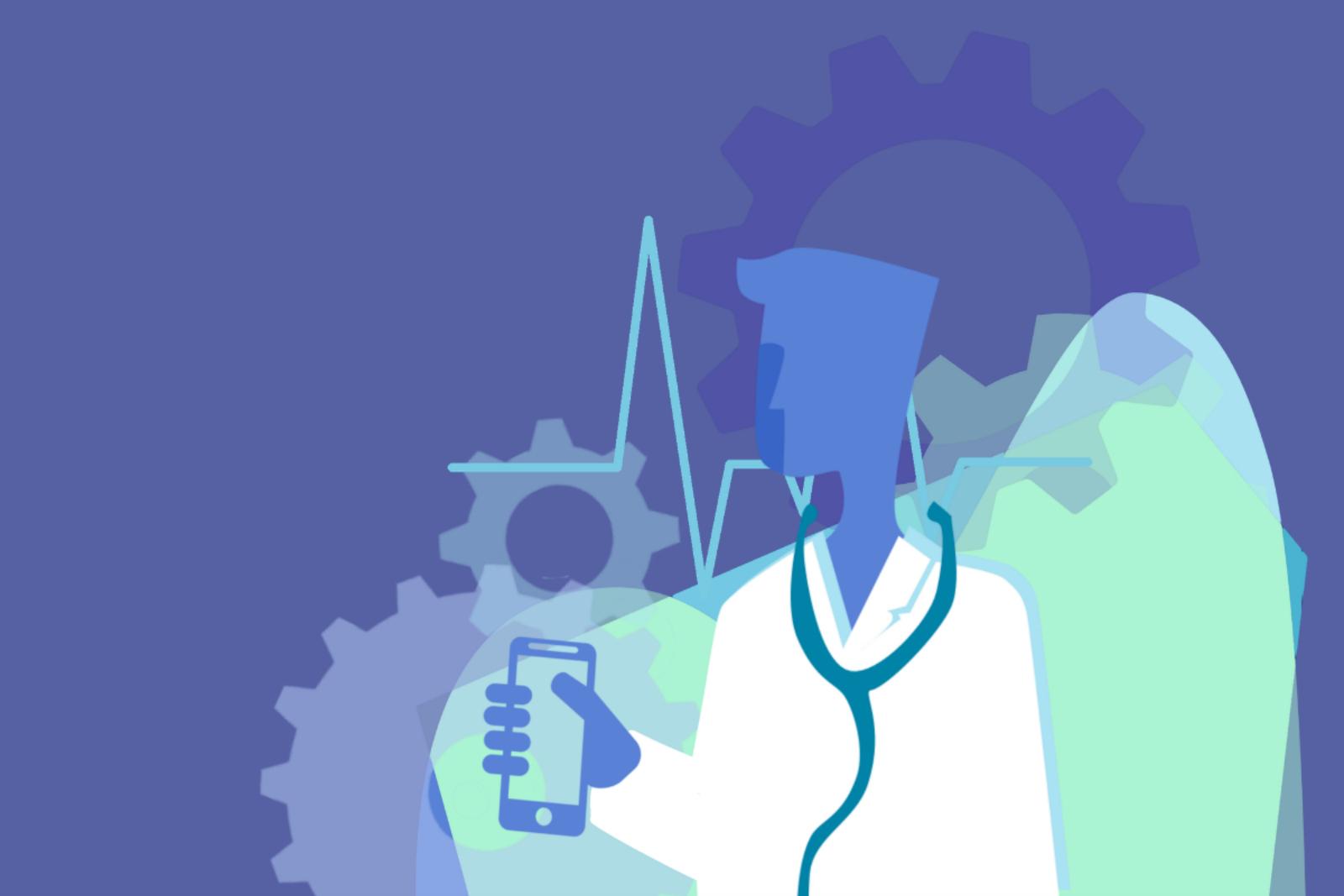
Legend says that if you reach deep enough into the inside pocket of Danny’s leather jacket, past the hordes of pens and six-sided dice moping dejectedly,...


March 25, 2017
Health and technology are at a crossroads, and their brainchild, digital health, is revolutionizing our healthcare system. Digital health encompasses symptom tracking, personalized medicine and machine learning, among other things. It aims to reduce inefficiencies in the healthcare system by increasing the quality of care while reducing cost, making it more more accessible to everyone.
The process of seeing a doctor and the profession of medicine in general have seen little change in decades. Analogous to Uber and Lyft’s complete overhaul of the taxi service market, healthcare may too be on the verge of a revolution informed by new and innovative technology. Our generation is likely to see the birth and growth of this movement and experience it firsthand, making it all the more important that we understand its basis and nature.
The four fundamental aspects of healthcare will remain unchanged: prevention, diagnosis, treatment and post-op. Though each individual digital health technology targets a niche market, the field as a whole aims to revise traditional medicine in each of its four stages — prevention, diagnosis, treatment, post-op — and thus while digital health may seem a narrow subfield of healthcare, companies within the field are remarkably diverse.
Two local companies, Verily and HealthOutcome, span the spectrum of the field. Verily, an Alphabet company of Google, deals with the prevention and treatment aspects of digital health, while HealthOutcome addresses post-treatment feedback.
Formerly Google Life Sciences, Verily designs technology to help prevent problems before they start, monitoring the body for diseases, and ultimately create products that can save lives.
“[We aim to make] healthcare active instead of reactive,” Verily Director of Special Projects Eric Peeters said. “Essentially, your car has sensors and warning lights that warn you before something goes wrong — a human doesn’t have that.”
As one of Verily’s prevention projects, Debug is pioneered by a group of scientists and engineers developing technology to release sterile mosquitoes to eliminate those that carry diseases. Merging Verily’s engineering expertise with international partners to stop the spread of disease-carrying mosquitoes, this prevention process combines sensors and algorithms to breed millions of sterile mosquitoes and efficiently sort them for release.
Prevention aside, Verily also spearheads intervention methods, aiding those who live with Parkinson’s disease. Recently, Verily collaborated with the company Liftware to make eating utensils to aid the thousands of people affected by hand tremor.
“It’s like a spoon and a fork, and when you shake it the spoon stays level so that these people can eat by themselves again,” Peeters said.
The tools are designed to reinstate a sense of dignity and self sufficiency, which Peeters says has been met by general user satisfaction.
On the other side of the healthcare continuum, HealthOutcome aims to improve current post operational services by providing a crowdsourced platform for patients to share reviews of their treatments or operations post-op.
Upon experiencing complications while recovering from knee surgery, founder and CEO Ofer Ben-Shachar realized that nobody in the medical community had warned him about complications or followed up with him. His goal in forming HealthOutcome was to create an accessible and unintimidating method for patients to share medical feedback.
“The whole concept is a technology-based company with a nice user interface,” Ben-Shachar said. “We make it very easy for patients to share their outcome information and present it in a nice way so people can understand. It’s not treated like a scientific paper that nobody really understands.”
While Verily and HealthOutcome interact with healthcare at different points of the process, both have similar long-term goals to revise traditional medicine. The central question of digital health remains: Will healthcare ever become fully digital, or will the current model persist? Peeters believes the future is a mix of the two.
“A part of [healthcare] is going digital and a part of it is going to have to stay the way it is,” Peeters said. “A lot of the interventions cannot be digital.”
Thanks to the completion of the Human Genome Project in 2003, which determined the sequence of all human DNA, medical professionals are now able to prescribe individualized treatments to their patients in an important subfield of digital health known as personalized medicine. Though the Human Genome Project ended over a decade ago, genome sequencing and personalized medicine are seeing much of their rapid development today.
Being able to examine a person’s genome helps physicians accurately predict a person’s susceptibility to a specific disease and how their body might respond to possible treatments. This allows a doctor to more effectively choose between treatments for a patient based upon their genetic makeup. This is a stark change from the traditional “one-size-fits-all” approach to medicine, and may shape healthcare for the next generation.
In its brief lifespan, personalized medicine has already made great progress in cancer and HIV/AIDS. Medical professionals in both fields have embraced personalized medicine by using genomic data and genetic makeup to customize screening, diagnosis, prognosis and therapy selection for each patient.
Despite the success of the Human Genome Project and the subsequent developments in genomics, this branch of digital health is still in infancy. Few products are readily available to the average patient, so many aren’t even aware that this aspect of personalized medicine exists, but science is taking strides towards making this type of medicine accessible to all.
Digital health aims to apply technology in reforming traditional medicine. Personalized medicine does just that — it uses novel genomic sequencing technology to change the “one-size-fits-all” model of medicine by informing a physician’s decisions with genetics. There is still plenty of progress to be made, but researchers are optimistic that personalized medicine may well be the new face of healthcare.
The digital health movement is shrouded in a flurry of excitement and optimisn, but despite the acclaim, the issues of bioethics and new products’ usability have surfaced and demand concern and deliberation.
Ethics
In 1996, Congress passed the Health Insurance Portability and Accountability Act (HIPAA), which expanded access to patients’ records and allowed various drug firms, marketers and researchers to gather personalized medical data to try to make more money.
One primary concern naysayers pose against digital healthcare is that without sufficient regulation, personalized medical information collected through digital healthcare will lead to a more sophisticated form of discrimination.
“Personal health information can be used to discriminate in countless ways beyond simply denying one enrollment in a health plan,” Senior Health Policy Advisor to former Senator Olympia J. Snowe William Pewen said to “The Atlantic.” “One could use [personal health information] to evaluate potential customers, employees or associates.”
Discrimination based on health records may be innocuous, manifesting in advertisements for treatments specific to one’s condition — say a new cancer therapy designed for a user’s specific tumor. However, similar usage of medical data could be blatantly damaging as insurance companies charge more or refuse to serve those with records of past medical conditions.
“Once an individual’s medical record is compromised, it’s like a credit account — such data never expires, and a replacement cannot be created,” Pewen said. “The damage is permanent and irreparable. In the language of the law, a victim cannot be made whole.”
Moreover, with digital health systems susceptible to breaches, this important and private data loses the security it once possessed. From 2009 to 2012, over 14.8 million unencrypted patient records were compromised in 10 data breaches. Even when Congress designed policy to force companies to notify patients if their records were compromised, the pharmaceutical industry quickly rejected the idea and lobbied against it. In the end, large pharmaceutical companies or “big pharma” have often looked to increase gains at consumer’s expense, and digital health may give them another avenue to do so.
Utility
Though the issue of bioethics poses important moral questions, digital health faces practical shortcomings as well.
In a study conducted with 26 patients at Zuckerberg San Francisco General (ZSFG) published in the “Journal of General Internal Medicine,” researchers concluded that mobile health apps offer little help to vulnerable populations because they’re difficult to navigate. Only 51 percent of participants could finish data-entry tasks across all apps, and participants could only retrieve data from the apps 43 percent of the time.
“Many of the patients we see at ZSFG — who have serious, and often multiple health problems — don’t appear to be able to use or access this technology,” Urmimala Sarkar, an associate professor of medicine who led the study at the Center for Vulnerable Populations at ZSFG, wrote in the study. “And they’re the ones who have the most to gain from these advances. We need to see more of a focus on designing technology for this population.”
Fragmentation poses another issue. Think of a current consumer of digital health: they may have an application to measure fitness, one to track blood glucose level and yet another to plan diet. This niche utility allows more companies to make more profit by creating many different products, but only creates more burden for the patient, especially those whose vital medical needs are split across various fields.
Moreover, critics are skeptical about the usefulness of many digital health products. Many believe current products only track and augment a normal lifestyle, rather than adequately serving patients in more urgent need.
“The system needs to be re-engineered,” chief technology and strategy officer of the Robert Wood Johnson Foundation, a philanthropic organization focused on health, Stephen Downs said in an interview with KQED. “We don’t need an app that counts steps. This is about finding solutions for people that are more compelling than the patterns that we have established.”
Final thoughts
In the next few years, digital health has the potential to significantly lower healthcare prices, create better coordination in and out of the hospital and help tackle chronic diseases. In light of this, the idea that usability currently has its flaws isn’t so much a critique of digital healthcare, rather a critique of the present. Meaning, instead of disavowing an entire field based on its current flaws, we should build from those flaws a better system to serve the needs of humans in a quickly modernizing world.
The issue of bioethics, however, is a bit messier. Similar to usability, the problems do not lie in the field of digital health itself — changes in the status quo could help mitigate the problem. With greater regulations by government organizations and advancing technical security, digital healthcare can provide safer services to patients.
There’s no reason to reject digital healthcare based on current problems. Yes, it is important to identify the shortcomings of the field in the midst of the predictable hype surrounding digital health. However, these problems are not cause for lament, as innovation to better the field is rooted in being aware of these flaws.

Legend says that if you reach deep enough into the inside pocket of Danny’s leather jacket, past the hordes of pens and six-sided dice moping dejectedly,...